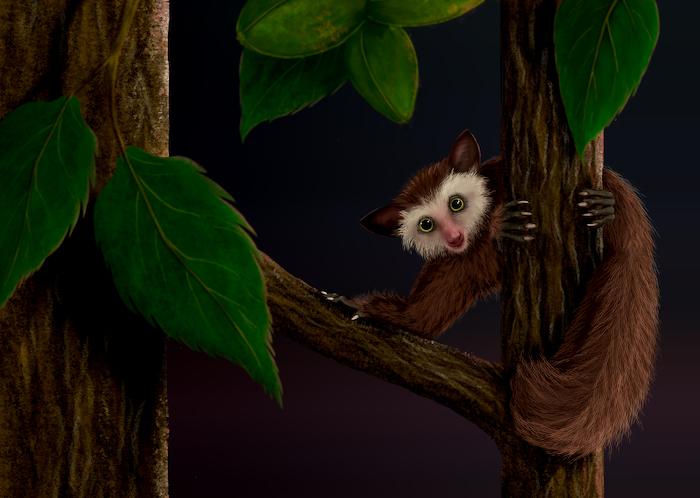Long Before the Arrival of Humans, a Strange Little Primate Populated the Western United States
Posted on Categories Discover Magazine

The first primates arrived in the Americas about 56 million years ago and prospered for a time, but it wasn’t to be.
They died out some 34 million years ago, after the Eocene-Oligocene extinction event, during which the planet became cooler and drier. Half of all mammal genera died around the globe.
But somehow, this set the stage for a lemur-like animal known as Ekgmowechashala to establish itself in the Great Plains of the present-day U.S.
Scientists have disputed how to classify the odd-looking creature for decades, but a rough consensus has settled on calling it a primate, making it the last to live here before humans arrived about 14,000 years ago. But where did Ekgmowechashala, the biological fluke, come from? A new study claims to have traced its evolution to southern China and has an explanation for the “Lazarus” primate that emerged from a history of death.
What Was the American Monkey?
Ekgmowechashala’s fossil history dates to the 1960s, when paleontologists discovered pieces of the animal in Nebraska, including one of its distinctive molars. Scientists subsequently identified more in South Dakota and Oregon, expanding the range of this American monkey that may have lived in trees.
Then, during the 1990s, a University of Kansas paleontologist named Chris Beard found a distinctive jaw while collecting fossils from an area in Guangxi, China. It bore a close resemblance to Ekgmowechashala fossils in the University of Kansas collection.
“We had absolutely no idea that we would find an animal that was closely related to this bizarre primate from North America,” Beard said in a statement. “But literally as soon as I picked up the jaw and saw it, I thought, ‘Wow, this is it.’”
Read More: What Are the Smartest Primates?
How Did the Ekgmowechashala Evolve?
More recently, Beard and Kathleen Rust, a doctoral candidate at the University of Kansas, have declared a new genus for the animal, Palaeohodites, thought to be a cousin to Ekgmowechashala. Rust’s further work fleshed out the family tree and found the two to be closely-related, which suggested a new origin story for the American monkey.
“Our analysis dispels the idea that Ekgmowechashala is a relic or survivor of earlier primates in North America,” Rust said in a statement. “Instead, it was an immigrant species that evolved in Asia and migrated to North America during a surprisingly cool period, most likely via Beringia.”
The primate must have somehow crossed the Beringia land bridge connecting Asia and the Americas, something made possible by lower sea levels.
Millions of years later, human beings likely did the same before heading south to the Americas.
Read More: How Similar Are Humans and Monkeys?